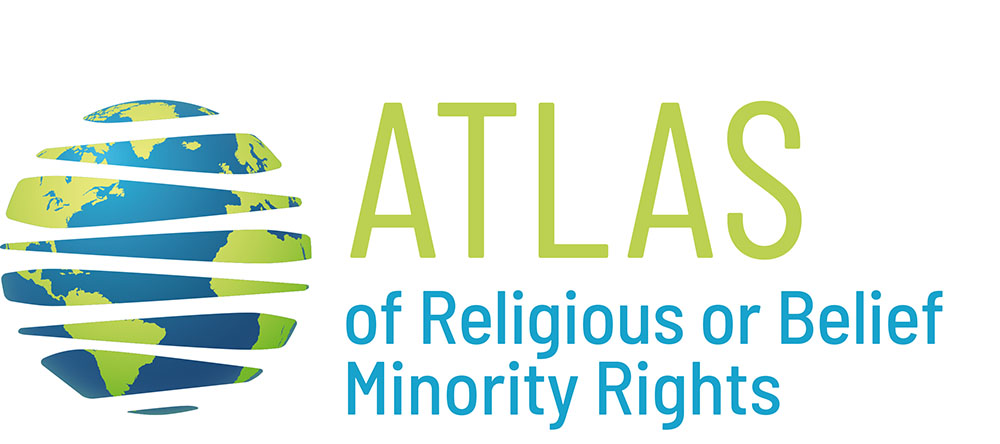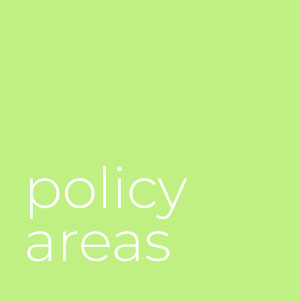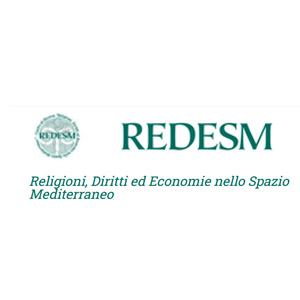Methodology
a) Definitional issues
1. Religious or belief majorities and minorities
Some Atlas indices require us to make a distinction between majority and minority religious/belief organizations in a country. To identify RBMs, the Atlas adopted the number-based criterion suggested by the UN Special Rapporteur on minority issues (see below, n. 2) and made use of the data provided by the World Religion Database, with the sole exception of Hungary where -according to the 2011 census- no religion exceeds the threshold of 50% of the population. Therefore Hungary, like Estonia, has been considered a country without religious majority.
2. Religious or belief minorities: definition
In 2019 the UN Special Rapporteur on Minority Issues provided the following definition of minority: “An ethnic, religious or linguistic minority is any group of persons which constitutes less than half of the population in the entire territory of a State whose members share common characteristics of culture, religion or language, or a combination of any of these. A person can freely belong to an ethnic, religious or linguistic minority without any requirement of citizenship, residence, official recognition or any other status” (A/74/160). The Atlas relied on this definition to identify the RBMs that were taken into consideration.
Concerning the notion of religious minorities, the Atlas followed the indications provided by the UN Human Rights Committee's General Comment No. 22 (1993), n. 2, and the Recommendations of the Forum on Minority Issues at its sixth session: Guaranteeing the rights of religious minorities, 26 and 27 November 2013, n. 8 (“The term “religious minorities” as used in the present document therefore encompasses a broad range of religious or belief communities, traditional and nontraditional, whether recognized by the State or not, including more recently established faith or belief groups, and large and small communities, that seek protection of their rights under minority rights standards. Non-believers, atheists or agnostics may also face challenges and discrimination and require protection of their rights”). Therefore, belief organizations have been included in the research on equal footing with religious organizations.
Based on these guidelines, the Atlas definition of RBM is a group of people gathered in common membership who represent less than half of the population of a State and who are bound together by the intent to preserve and advance their religion or belief.
3. Religious or belief minorities: identification
Thirteen RBMs have been taken into consideration, chosen to include the largest RBMs and some RBMs characterized by legally and socially controversial doctrines and practices (see the page Religions/Beliefs).
Often within the same religious tradition there are several Churches or religious organizations, each of which has its own structure. Since it is not possible to take them all into consideration (many of them only have a small number of believers), they have been grouped into denominational families. This is the case of the Evangelical Christian churches, which have been divided into two groups. The first is made up of churches that have direct roots in the Protestant Reformation, have converged with it or are directly derived from it and which in Anglo-Saxon sociology are defined as “mainline churches.” The second denominational family includes movements and denominations deriving from the so-called second revival, which are defined as Evangelicals and/or non-denominational churches. Although the exact boundary between the two areas cannot be traced without taking into account territorial and historical variables, for each of them there are theological and ecclesiological principles that support this distinction.
For the Orthodox Churches the same criterion has not been followed because, in countries where the majority of the population professes the Orthodox religion, the majority Church holds full jurisdiction over its territory. Therefore, the presence of other Orthodox groups is very limited and negotiated with the majority Church, except in the few cases where two jurisdictions co-exist in the same territory like in Estonia. In this respect, the Atlas does not consider the minority Orthodox organizations/communities which are not recognized as canonical by the Eastern Orthodox Communion (like the local Old Calendarist groups). For the Orthodox Churches in the diaspora, where usually each one refers to the Church in the country of origin, any differences in legal regulation between the different Orthodox Churches have been reported in the narrative part accompanying the data. The same criterion has been adopted for the different currents within other religious groups, such as Muslim and Jewish communities, or for belief organizations.
4. International standards on RBM rights
First of all, members of religious minorities enjoy the right to religious freedom and all other human rights that are accorded to every individual and group regardless of whether they belong to a majority or a minority (see the Report of the Special Rapporteur on freedom of religion or belief, Heiner Bielefeldt, n. 17: “The rights of persons belonging to religious or belief minorities should be consistently understood from a human rights perspective, and must be protected in conjunction with all other human rights”). However, they also enjoy specific rights (which are therefore not granted to religious majorities) aimed at protecting them against discrimination, ensuring respect for their religious identity and promoting participation in the social, cultural and political life of the country where they live, including decision-making processes concerning issues of interest to them. To make the enjoyment of these rights effective, States and public institutions must take positive actions to promote the identity and participation of religious minorities and to combat their discrimination.
The international standards that have been developed to ensure the respect and promotion of these rights concern on the one hand minorities (OHCHR, Minority Rights: International Standards and Guidance for Implementation); and on the other hand, freedom of religion or belief (OHCHR, International standards on freedom of religion or belief). These standards are analytically indicated in relation to each group (cluster) of questions and answers contained in the questionnaires through which the data and information contained in the Atlas were collected (see the introduction to each policy area).
5. Countries
See the first page of the section “Countries”.
b) Questionnaires, policy areas, clusters, and indicators.
The Atlas data and information were collected through eight questionnaires (legal status of RBMs; RBM rights in public schools; belief/faith based private schools; spiritual assistance in prisons, health facilities and armed forces; religious/belief symbols; marriage and family; Ritual slaughter&halal/kosher food; media; meeting and worship places) sent to legal experts of the countries involved in the research, whose responses provide a reliable and in-depth picture of the rights enjoyed by RBMs in each country. Each response was checked by the Atlas team to ensure that the legal experts correctly understood the question and responded in a manner consistent with the responses given by the experts in the other countries. Each response was also double-checked against each country's legal provisions and other available information. When ambiguity was found or doubts arose, the Atlas team asked the experts for additional information and, when further investigation was needed, consulted other experts.
The questions contained in the questionnaires have made it possible to create a set of indicators which cover eight policy areas corresponding to the eight questionnaires (see above). The indicators, once assessed against the benchmark provided by the international standards listed in section a), n. 4, allow to measure the extent to which the rights of RBMs are respected and promoted by the laws and policies of each country.
Within each policy area, the indicators that address the same topic have been combined into clusters. Each cluster has been given a score resulting from the weighted average of the scores given to the responses included in the same cluster. This makes it possible to analytically evaluate the respect and promotion of minority rights within each policy areas: for example, in the policy area "RBM rights in public schools" one cluster contains the questions and answers regarding the right of RBMs to teach their doctrine in public schools, another the right of RBM members to be exempted from attending the teaching of religion/belief, and yet another the right of teachers and students to wear the symbols of their RBM. In this way, it is possible to precisely identify, within the broader policy area, the fields where the rights of RBMs need to be promoted most.
This edition of the Atlas contains only data from six legal questionnaires. Data from the remaining questionnaires will be published in the coming months.
The indicators were used to construct three indices.
1. Index of promotion (P-index States and P-index RBMs)
This index measures the extent to which the RBM rights are respected and promoted in the 16 states considered as a whole (eu16) and in each of them. Respect means ensuring that the rights granted to an individual or group of people under international human rights standards are not violated. Promote means putting in place the conditions that facilitate the enjoyment of these rights and foster the development of RBM identity and the participation in the social, cultural and political life of the country where they live.
The P-index concerning states considers the degree to which the rights of RBMs, taken as a whole, are promoted in each country and thus makes it possible to assess which states provide the most (or least) favorable legal regulation. The index takes respect for rights as the benchmark and assigns the "0" score to the state provisions that ensure it. Everything above this line constitutes promotion and is indicated by different scores according to the significance of the promotion on a scale ranging from 0 to 1; the state provisions which fall below the "0" line are marked with scores going from 0 to -1. This does not mean that any form of promotion is legitimate: there may be forms of promotion that lack a proper basis and/or result in discriminatory measures against the RBMs which are excluded. These eventualities are flagged up and discussed in the 'Risk of discrimination' section of the opening page of each policy area.
For each policy area, a score is calculated resulting from the weighted average of the numerical values of the indicators contained therein in order to obtain a numerical value for the entire area; the average of the numerical values of all areas leads to the overall score for a country or an RBM.
It is possible for a state to promote or restrict the rights of certain RBMs only. The index takes into account this possibility by giving the following additional scores: 0.33 (or -0.33) when the promotion/restriction affects from one RBM to one third of all RBMs considered in the research; 0.66 (-0.66) when it affects between 1/3 and 2/3 of RBMs; and 1 (-1) when it affects more than 2/3 of RBMs.
The P-index concerning RBMs takes into account the degree to which the rights of each RBM are promoted in the 16 states considered as a whole (eu16). It also considers how much they are promoted in each state covered by the Atlas and thus makes it possible to assess which RBMs enjoy a more favorable legal regulation in each country. The scoring follows the same criteria with one variant. Where, in the P-index concerning States, a question considers how many RBMs enjoy a specific right and a score (0.33, 0.66 or 1) is assigned to that state in proportion to their number, in the P-index concerning RBMs a score of 1 is assigned to each RBM that enjoys that right and a score of -1 to the one that does not. More detailed information can be found in the "Explanation of scores" section of the DATA page.
2. Index of equal treatment (E-index RBMs)
States do not equally promote RBM rights: it happens frequently that a RBM is entitled to enjoy more rights than another. This index measures the difference between the rights recognized to each RBM in each state (differences which, if there is no legitimate justification or are disproportionate, may amount to discrimination). This index is created by breaking down the same data provided by the P-index and considering them with reference to each RBM (data concerning religious/belief majorities are not calculated in this index; they are taken into account in the G-index). When an RBMs enjoys a right (e.g., that of teaching its doctrine in public schools) it is given a score of 1, when this right is denied, it receives a score of -1.
As in the case of the P-index, the E-index makes it possible to assess a) the degree of equal treatment that each state ensures to the RBMs as a whole and b) the degree of equal treatment that each RBM enjoys in a state in relation to all other RBMs.
The differences between the rights attributed to each RBM may be based on different factual situations. One RBM may have millions of members and another a few hundred, and this difference may be relevant, for example, when the state has to organize the spiritual assistance service in prisons. In such a case a different legal regulation would be legitimate. This is the reason why the Atlas has constructed an equal treatment rather than a discrimination index. In many cases, assessing whether unequal treatment constitutes discrimination requires knowledge of the context in which that difference in treatment occurs and this is beyond the scope of Atlas. For this reason, the Atlas limits itself to indicating cases where a difference in treatment may constitute discrimination in the section “Key findings, recommendations and risks of discrimination” of each policy area. However, it should be emphasized that, even when a difference in treatment is justified on objective grounds, it is necessary to consider whether the legal system of a state provides measures to minimize unequal treatment resulting from, for example, the larger or smaller number of members of an RBM. Differences in the number of members or in the years a minority has been present in a country justify different legal treatment only when it is not possible to regulate a legal issue in such a way that smaller or newer minorities are not penalized.
3. Index of religious majority-minorities gap (G-index)
This index measures the distance between the rights recognized to the religious/belief majority and minorities in each country. It makes use of the same scoring system of the E-index concerning RBMs but it also takes also into account the majority RBOs.

 MENU
MENU














